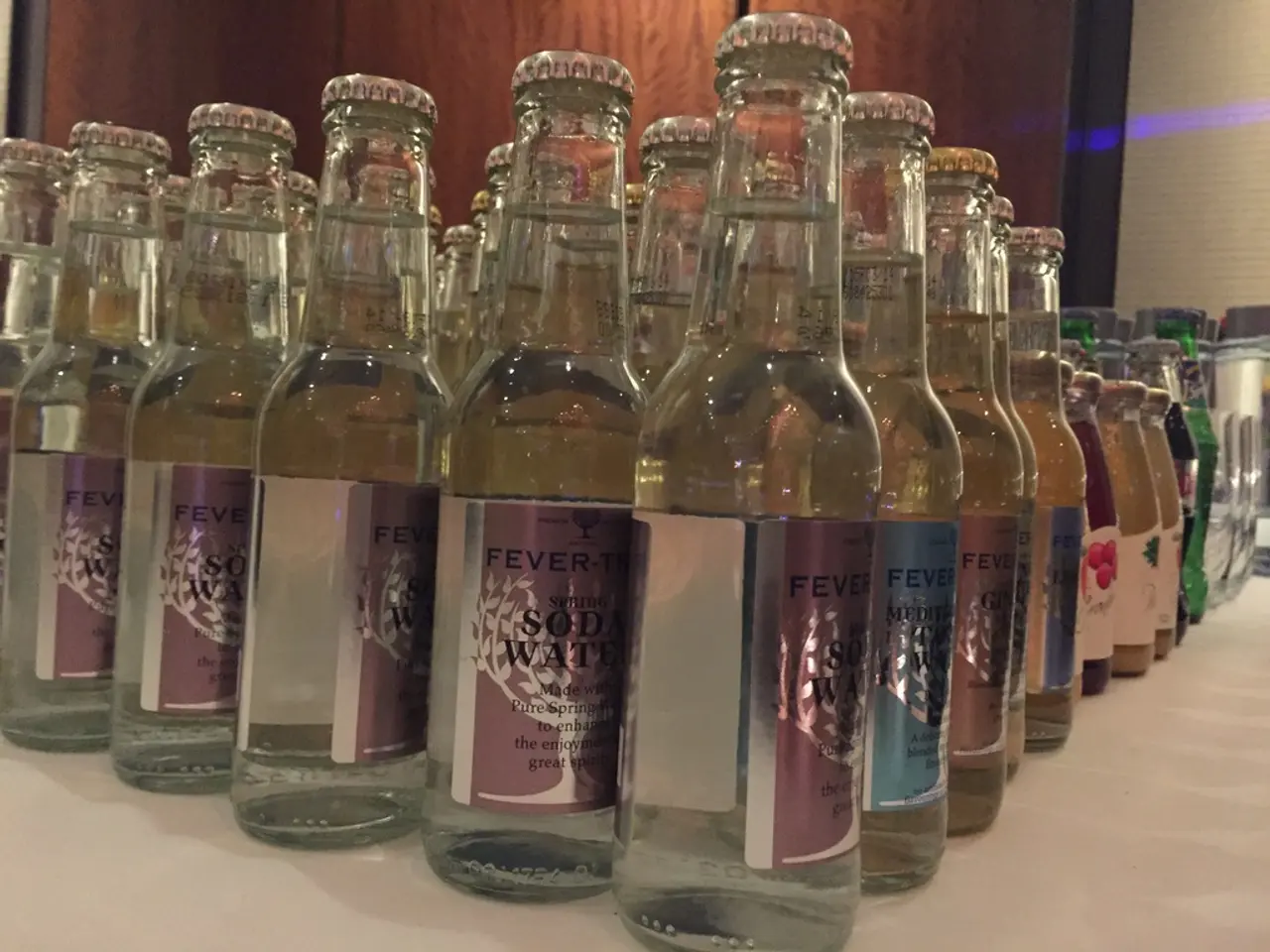Contest between bottled and tap water: Advantages and disadvantages
In the ongoing debate between tap water and bottled water, a growing body of evidence suggests that tap water is the more sustainable and environmentally friendly option.
The environmental impacts of bottled water are substantial, with significant drawbacks including high energy consumption, plastic pollution, resource depletion, and chemical contamination risks. Producing bottled water can require up to 2,000 times more energy than producing tap water, due to factors such as manufacturing plastic bottles, bottling processes, and transportation to retail locations. Over 1 million plastic bottles are purchased every minute worldwide, but only about 9% are recycled, leading to a major plastic waste problem.
Bottled water consumption also generates massive amounts of greenhouse gases and consumes large amounts of fossil fuels and water. The U.S. bottled water industry alone emits millions of tons of CO₂-equivalent greenhouse gases annually.
Moreover, bottled water has been found to contain microplastics in 93% of samples, often at levels higher than tap water. Chemicals such as BPA and PFAS (per- and polyfluoroalkyl substances) may also be present, posing potential health risks.
In contrast, tap water has a dramatically lower environmental impact, requiring far less energy and generating minimal plastic waste, especially when filtered at home for improved taste or safety. When properly maintained and filtered, tap water is safe and often subject to stricter regulatory oversight than bottled water.
A summary table highlights the key differences between bottled water and tap water:
| Aspect | Bottled Water | Tap Water | |------------------------|---------------------------------------|------------------------------------| | Energy Use | Up to 2,000 times more energy | Minimal energy when filtered | | Plastic Waste | High; low recycling (9%), major pollutant | Negligible plastic waste | | Carbon Footprint | Significant (millions of tons CO₂) | Very low | | Water Resource Use | High (1.3 L water per 1 L bottled water) | Efficient use | | Contaminants | Microplastics, BPA, PFAS present | Possible contaminants but regulated | | Cost | Much higher (up to 10,000x tap water) | Very low cost |
In conclusion, tap water is far more sustainable and environmentally friendly than bottled water, which contributes to plastic pollution, high carbon emissions, and resource depletion without offering clear health advantages. Opting for filtered tap water is a smarter choice for the environment and public health.
People with weakened immune systems should consider choosing bottled water that manufacturers have treated to protect against the parasite Cryptosporidium. However, it is important to note that bottled water is generally safe to drink, as it is processed and transported under sanitary conditions, according to the FDA.
In the United States, tap water is subject to more frequent testing than bottled water, as per Food & Water Watch. Contaminant level limits have remained unchanged for over 20 years, as reported by the Environmental Working Group. Tap water can be filtered with carbon filters or a reverse-osmosis system to improve its safety.
Consumer access to bottled water information and contaminant levels is limited compared with the tap water disclosure requirements required by the EPA. Not all contaminants in tap water are regulated, according to the Environmental Working Group. People can check the quality of their tap water by contacting their local water company for an Annual Water Quality Report or by checking it against the EWG's standards.
It is also worth noting that most people prefer types of water with medium mineralization, regardless of the source. Blind taste tests often find that people cannot differentiate between tap water and bottled water.
In the face of the environmental challenges posed by bottled water, it is crucial to make informed choices. By choosing tap water, we can help reduce plastic waste, conserve resources, and protect our planet for future generations.
References: [1] Food & Water Watch. (2018). Bottled Water: Pure Drink or Pure Hype? [2] National Geographic. (2018). The dark side of bottled water. [3] Environmental Working Group. (2021). Bottled Water Quality: A Toxic Waste. [4] World Health Organization. (2015). Guidelines for Drinking-water Quality: 4th Edition. [5] Environmental Protection Agency. (2021). Safe Drinking Water Act.
- The environmental consequences of consuming bottled water are alarming, with issues such as high energy consumption, plastic pollution, resource depletion, and potential chemical contamination threat.
- Tap water, on the other hand, is more environmentally friendly, requiring minimal energy and producing negligible plastic waste, especially when filtered at home.
- When it comes to the health implications, properly maintained and filtered tap water is safe and often subject to stricter regulatory oversight than bottled water.
- In the debate between tap water and bottled water, tap water is a more sustainable and eco-friendly choice, contributing less to plastic pollution, carbon emissions, and resource depletion without significantly compromising health.
- As for home and garden, filtering tap water at home for improved taste or safety can help reduce the environmental footprint, making it a smarter choice both for the environment and personal health.
- In the context of the climate-change and environmental-science, it's crucial to make informed decisions about our lifestyle choices, such as the food-and-drink consumption, to promote sustainability and reduce the impact on our planet's health.





